Aflatoxins pose a serious health hazard to humans and livestock
Aflatoxins are toxic substances produced by certain types of fungi (molds) naturally present all over the world; they can contaminate food crops and pose a serious threat to humans and livestock.
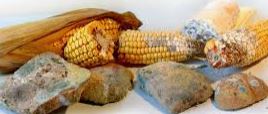
They are also an important economic burden by being responsible for 25% or more of the destruction of food crops around the world every year.
Humans are exposed most of the time through nuts or seeds
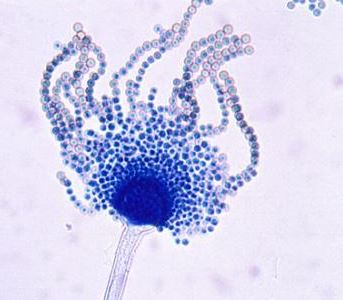
Two closely related species of fungi are the main producers aflatoxins having a significant impact on public health: Aspergilus flavus and Aspergilus parasiticus. In favorable conditions, which are usually found in tropical and subtropical regions, especially high temperature and high humidity, these molds, which develop normally on dead or decaying plants, can invade food crops.
Drought stress, insect damage or poor weather conditions storage can also contribute to the more frequent appearance of these molds, including in temperate regions. Several types of aflatoxins (14 or more) are found in nature, but four – aflatoxins B1, B2, G1 and G2 are particularly dangerous for humans and animals because they are found in all major food crops; however human exposure comes mainly contaminated nuts, seeds or their derivatives. In addition, aflatoxin M1 (AFM1) a metabolism product of aflatoxin B1 (AFB1 ), can also be found in milk in areas of high exposure to aflatoxins. Subsequently, humans can be exposed to this aflatoxin through milk and milk products, including breast milk, especially in areas where animals are fed poor quality seeds.
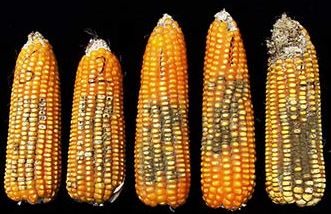
Food crops can be contaminated both before and after harvest. Contamination by aflatoxins before the harvest is quite limited for corn, cotton seeds, peanuts and nuts. After harvest, this contamination can affect various other crops such as coffee, rice and spices. Storage in unsuitable conditions favoring the growth of molds (hot and humid storage environments) can typically lead to much more contamination levels higher than those observed in the fields.
Exposure through food is very variable
National estimates of dietary exposure to aflatoxins show differences between developed and in development. In the former, food exposures aflatoxins are generally less than 1 ng / kg bodyweight per day [one nanogram is one billionth (1 x 10-9) gram], while for some countries from sub-Saharan Africa, these estimates exceed 100 ng / kg of body weight per day but are often based on data very limited. Food exposure to AFM1 has rarely been estimated more than 1 ng / kg of body weight per day, regardless of the country (although values of up to 6.5 and 8.8 ng / kg bodyweight per day have been reported in young children and infants).
Long-term exposure can have serious consequences for the health
Long-term or chronic exposure to aflatoxins can have the following consequences in particular
below. ‹Aflatoxins are potentially carcinogenic and can affect all systems organic, especially the liver and kidneys; they can cause liver cancer and have been linked to other types of cancer – AFB1 is known to be carcinogenic in the man ; the ability of this aflatoxin to cause liver cancer is significantly
increased in the presence of hepatitis B virus (HBV) infection.
- Aflatoxins are mutagens in bacteria (they affect DNA), genotoxic and have the ability to cause birth defects in children.
- Children could be stunted because of them, even if the data at hand this subject has yet to be confirmed as other factors also contribute to the decline growth like low socioeconomic status, chronic diarrhea, disease infectious or malnutrition).
- Aflatoxins have an immunosuppressive effect, so they can reduce resistance to infectious agents (HIV or tuberculosis, for example).
Acute poisoning can be fatal
When exposed to large doses, aflatoxins cause acute poisoning (aflatoxicosis) which can be fatal, usually through liver damage. Outbreaks acute liver failure (jaundice, lethargy, nausea, death), identified as aflatoxicosis, have been observed among human populations since the 1960s. The most recent deaths aflatoxins have been reported in the summer of 2016 in the United Republic of Tanzania. The adults are more tolerant of acute exposure than children. Food consumption is suspected
containing aflatoxin concentrations greater than or equal to 1 mg / kg cause aflatoxicosis.
Based on outbreaks in the past, it has been estimated that consumption, over a period of one
three weeks after a dose of AFB1 between 20 and 120 µg / kg body weight per day [one microgram corresponds to one billionth (1 x 10-9) kilogram], exerted an acute toxic action and was potentially lethal.
In animals, aflatoxins cause various side effects

In chickens, aflatoxins induce liver damage, reduced productivity and reproductive efficiency, decreased egg production, impaired shell quality and carcasses and increased susceptibility to disease. Pigs are also very affected, with egregious chronic effects like liver damage.
The main symptoms in cattle are a drop in weight and liver and kidney damage; which are also accompanied by a decrease in milk production. The existence of different forms of aflatoxin metabolizing enzymes (cytochromes P450 or glutathione S-transferases, for example) is considered responsible for variations in susceptibility of various animal breeds to the toxic effects of aflatoxins.
Is Aflatoxicosis difficult to detect in humans or animals ?
It is difficult to detect aflatoxicosis in humans and animals due to the variability of clinical signs and the potential presence of other factors such as system depression immune system caused by an infectious disease.
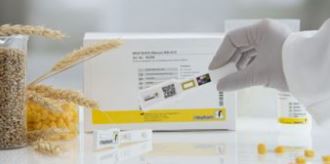
The two techniques used most of the time to detect aflatoxin levels in humans, one involves measuring a product decomposition in the urine (which is only present 24 hours after exposure) and for the other, to measure the concentration of AFB-albumin adducts in blood serum, by providing information on the duration of the exposure (weeks or months). The measurement of these biological markers is important in the investigation of outbreaks when aflatoxin contamination is suspected.
Aflatoxin control requires an integrated approach
Overall, an integrated approach, aimed at controlling aflatoxins at all stages, from the field at the consumer’s table is necessary to reduce risk. Such an approach includes targeted plant breeding and host crop strengthening practices and methods biological control, coupled with postharvest technologies such as proper drying and storage potentially affected crops, as well as the development of suitable alternative uses for preserve at least partially an economic return on the value of damaged crops.
Therefore, eliminating sources of contamination, promoting agricultural practices and improved storage, ensuring the availability of sufficient resources for analysis and early diagnosis, enforcing strict food safety standards, informing and educating consumers and farmers (small / subsistence farms), promoting better feed and management of livestock and raising awareness in a general in the wearing of personal protective equipment, national authorities can contribute to the aflatoxin control.
WHO supports countries in their fight against aflatoxins
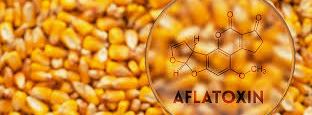
WHO, in collaboration with FAO, assesses science and develops assessments risks to define risk-free exposure levels. Based on these assessments, these organizations recommend maximum concentrations of aflatoxins in different foods. These maximum values form the basis of national regulations to limit contamination.
Since the first times they were mentioned in 1960, aflatoxins have repeatedly subject to JECFA assessments to assess their toxic effects and dietary exposure. These assessments provide information to the Codex Alimentarius Commission, 2 who has been working since 1963 the definition of harmonized international food standards, intended to protect the health of consumers and to ensure fair business practices.
Codex standards define maximum values for levels of contaminants and natural toxins, such as aflatoxins in food and serve as a benchmark for trade international food so that consumers around the world can confidently assume that the food they buy meets quality standards safety and quality, regardless of where they are produced. Maximum concentrations aflatoxins in various products such as certain nuts and seeds, dried figs and milk are found between 0.5 and 15 µg / kg [one microgram (µl) representing one millionth (1 x 10-6) gram).
For prevent and reduce the risk of aflatoxins being present in foods intended for men or animals, the Codex Commission has also developed a code of practice, which describes in detail appropriate preventive measures.
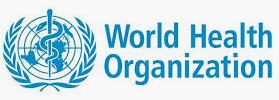
In support of this work, WHO collects food contamination data from institutions recognized nationally through the contamination monitoring and evaluation program food from the WHO Global Environmental Monitoring System, usually known as GEMS / Food.3 GEMS / Food contaminant database informs governments, the Codex Alimentarius Commission and other relevant institutions, as well as the general population, on contaminant levels and their trends in food.
The GEMS / Food program has also set up a database listing the diets by module consumption, which provides an overview of food consumption patterns in the world, through 17 dietary patterns (based on people’s food choices) covering more than 180 countries. Associated estimates, combined with contamination levels reported, make it possible to assess the potential exposure of populations to contaminants such as aflatoxins in food. The consumption regimes are established according to the data collected by FAO in the Food Balance Sheet (FBS) and are commonly used by international risk assessment bodies.
